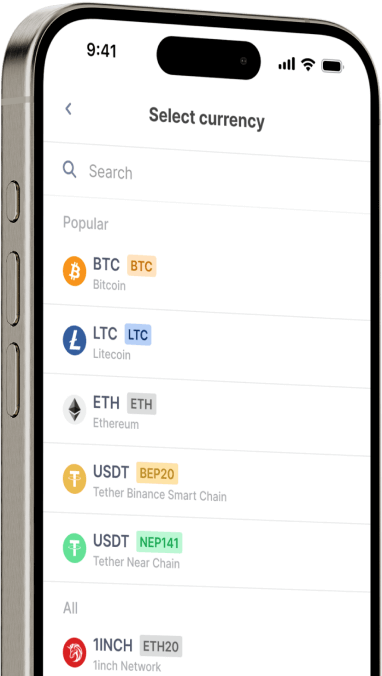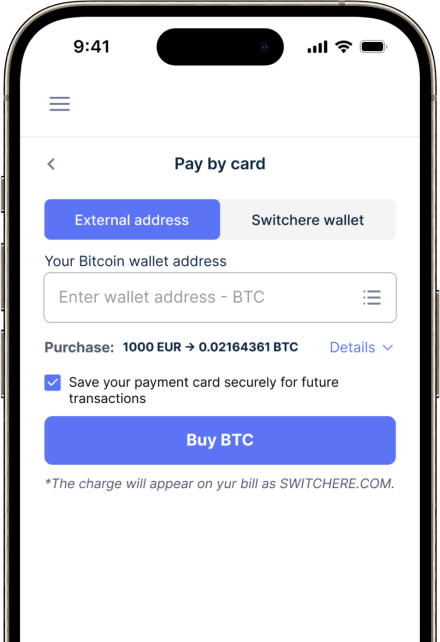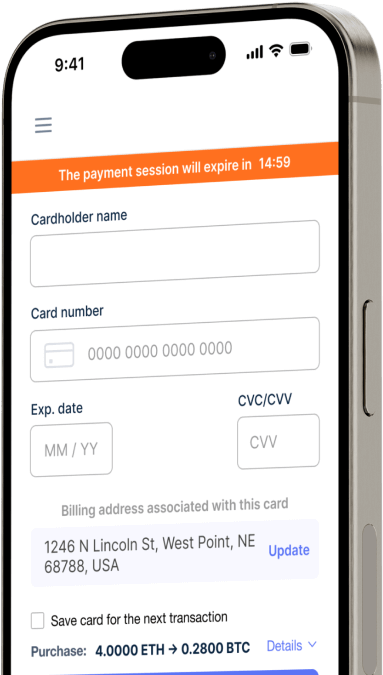Dönüştürmek
Japanese yen (JPY)'dan Avalanche (AVAX)'ye aniden
Switchere'de Avalanche (AVAX) ile kolayca Japanese yen (JPY) satın alın ve hızlı, güvenli işlemlerden yararlanın.
Hakkında
Avalanche (AVAX)
Avalanche (AVAX), merkezi olmayan uygulamaları (dApps) barındırmak ve özel blok zinciri ağlarının oluşturulmasını kolaylaştırmak için tasarlanmış son derece ölçeklenebilir bir blok zinciri teknoloji platformudur. Birincil amacı, yüksek verim, düşük gecikme süresi ve sağlam ademi merkeziyetçilik sunarak blok zinciri trilemmasını ele almaktır. Avalanche bunu, saniyenin altında işlem kesinliği sağlayan bir proof-of-stake (PoS) temeli üzerine inşa edilmiş bir protokol ailesi (Snowman, vb.) olan yeni konsensüs mekanizması ile başarmaktadır. Bu da onu zorlu DeFi uygulamaları ve kriptografik güvenlik gerektiren kurumsal sınıf çözümler için cazip bir dijital varlık altyapısı haline getirmektedir.
Avalanche'ın temel ayırt edici özelliği, geliştiricilerin kendi kurallarına, sanal makinelerine (C-Chain üzerinde EVM uyumluluğu dahil) ve tokenomiklerine sahip olabilen ısmarlama, uygulamaya özel blok zincirleri başlatmalarına olanak tanıyan alt ağ mimarisidir. Bu alt ağlar bağımsız olarak çalışabilir veya ana ağ ile güvenliği paylaşabilir. Yerel hizmet tokenı AVAX, bu merkezi olmayan ağ içinde çok önemli bir rol oynamaktadır. İşlem ücretlerini ödemek, doğrulayıcılar tarafından stake edilerek ağın güvenliğini sağlamak ve çoklu alt ağlar arasında temel bir hesap birimi olarak kullanılır. Avalanche, Web3 altyapısında inovasyonu teşvik eden ve çeşitli bir zincir içi ekosistemi destekleyen lider bir katman-1 akıllı sözleşme platformu olarak tanınmaktadır.
Diğer 150+ Kripto Para Birimlerini Japanese yen (JPY) karşılığında satın alın
Japanese yen (JPY) için Diğer Madeni Paralar
-
JPY için ZRX
-
JPY için 1INCH
-
JPY için AAVE
-
JPY için ACH
-
JPY için ALGO
-
JPY için TLM
-
JPY için ANKR
-
JPY için APE
-
JPY için NFT
-
JPY için API3
-
JPY için APT
-
JPY için ARPA
-
JPY için AUDIO
-
JPY için AVAX
-
JPY için AVAX
-
JPY için AXS
-
JPY için BADGER
-
JPY için BAL
-
JPY için BNT
-
JPY için BAT
-
JPY için BNB
-
JPY için BSW
-
JPY için BSV
-
JPY için BLUR
-
JPY için BONE
-
JPY için CTSI
-
JPY için CELR
-
JPY için CELO
-
JPY için CEL
-
JPY için LINK
-
JPY için CHZ
-
JPY için CHR
-
JPY için C98
-
JPY için COMP
-
JPY için CFX
-
JPY için PEOPLE
-
JPY için CVX
-
JPY için ATOM
-
JPY için CTC
-
JPY için CRV
-
JPY için DAI
-
JPY için DASH
-
JPY için MANA
-
JPY için DENT
-
JPY için DGB
-
JPY için DYDX
-
JPY için XEC
-
JPY için EOS
-
JPY için ETC
-
JPY için ENS
-
JPY için ETHW
-
JPY için FET
-
JPY için FIL
-
JPY için FLOKI
-
JPY için GALA
-
JPY için GNO
-
JPY için ONE
-
JPY için HBAR
-
JPY için HOT
-
JPY için HOOK
-
JPY için ICX
-
JPY için ILV
-
JPY için IMX
-
JPY için INJ
-
JPY için ICP
-
JPY için IOST
-
JPY için IOTX
-
JPY için JASMY
-
JPY için JST
-
JPY için KAVA
-
JPY için KCS
-
JPY için KSM
-
JPY için KNC
-
JPY için LDO
-
JPY için LQTY
-
JPY için LPT
-
JPY için LOOKS
-
JPY için LRC
-
JPY için LUNA
-
JPY için MKR
-
JPY için MASK
-
JPY için EGLD
-
JPY için ALICE
-
JPY için NEAR
-
JPY için XEM
-
JPY için NEXO
-
JPY için NOT
-
JPY için NMR
-
JPY için OKB
-
JPY için OMG
-
JPY için ONT
-
JPY için EDU
-
JPY için OP
-
JPY için OGN
-
JPY için CAKE
-
JPY için PAXG
-
JPY için PENDLE
-
JPY için DOT
-
JPY için POL
-
JPY için QTUM
-
JPY için QNT
-
JPY için RDNT
-
JPY için XRD
-
JPY için RVN
-
JPY için REN
-
JPY için RSR
-
JPY için RLC
-
JPY için RPL
-
JPY için SFP
-
JPY için SHIB
-
JPY için SKL
-
JPY için SXP
-
JPY için STND
-
JPY için STG
-
JPY için XLM
-
JPY için GMT
-
JPY için STORJ
-
JPY için STMX
-
JPY için SUSHI
-
JPY için SNX
-
JPY için USDT (Polygon)
-
JPY için USDT (AVAC)
-
JPY için USDT (BEP20)
-
JPY için USDT (ERC20)
-
JPY için USDT (SPL)
-
JPY için USDT (NEP141)
-
JPY için USDT (FA2)
-
JPY için USDT (TRC20)
-
JPY için USDT (JETTON)
-
JPY için XTZ
-
JPY için GRT
-
JPY için SAND
-
JPY için TFUEL
-
JPY için THETA
-
JPY için RUNE
-
JPY için TON
-
JPY için TUSD (BEP20)
-
JPY için TUSD (TRC20)
-
JPY için TWT
-
JPY için UOS
-
JPY için UMA
-
JPY için UNI
-
JPY için USDC (Polygon)
-
JPY için USDC (SPL)
-
JPY için USDC (OP)
-
JPY için USDC (BEP20)
-
JPY için USDC (AVAC)
-
JPY için USDC (ARB)
-
JPY için USDC (ERC20)
-
JPY için VET
-
JPY için VRA
-
JPY için WAXP
-
JPY için WOO
-
JPY için WLD
-
JPY için WBTC
-
JPY için WMINIMA
-
JPY için XDC
-
JPY için YFI
-
JPY için YGG
-
JPY için ZIL
Avalanche (AVAX) Nasıl Satın Alınır
Sıkça Sorulan Sorular
-
Japon Yeni (JPY) ile Avalanche (AVAX) satın almanın birincil yöntemi nedir?
Genellikle, JPY ile AVAX satın almak, bir fiat on-ramp görevi gören düzenlenmiş bir Japon kripto para borsası kullanmayı içerir. Kullanıcıların Japonya'nın Finansal Hizmetler Ajansı (FSA) tarafından zorunlu kılınan KYC/AML doğrulamasını tamamlaması gerekir. En yaygın ödeme yöntemi, borsaya doğrudan Japon Yeni banka havalesi yapmak ve ardından platformun emir defterinde bir JPY/AVAX işlemi gerçekleştirmektir. Satın alınan AVAX daha sonra C-Chain uyumlu dijital cüzdanınıza gönderilir.
-
JPY'den AVAX'a işlem yaparken Avalanche'ın işlem kesinliğini farklı kılan nedir?
JPY ile AVAX satın aldıktan ve kişisel bir cüzdana taşıdıktan sonra, sonraki herhangi bir blok zinciri işlemi Avalanche'ın benzersiz konsensüs protokolü olan Snowman'dan yararlanır. Bu protokol, neredeyse anında işlem kesinliği (genellikle 2 saniyenin altında) sağlar. Bu, AVAX transferi veya bir dApp ile etkileşim gibi bir işlem onaylandığında geri döndürülemez olduğu anlamına gelir. Bu yüksek hızlı, güvenli kesinlik, Avalanche ekosisteminde aktif olan kullanıcılar için önemli bir teknik avantajdır.
-
Bir Japon borsasında JPY ile satın aldıktan sonra AVAX'ı nasıl güvenli bir şekilde saklamalıyım?
Optimum güvenlik ve Avalanche ekosistemiyle tam olarak etkileşim kurmak için en iyi uygulama, AVAX'ınızı borsadan kendi saklamalı dijital cüzdanınıza taşımaktır. Seçenekler arasında resmi Core cüzdanı veya diğer uyumlu üçüncü taraf cüzdanlar bulunur. Bu size özel anahtarlarınız üzerinde kontrol sağlar. AVAX'ın farklı zincirlerde bulunduğunu unutmayın: transferler için X-Chain, staking için P-Chain ve akıllı sözleşmeler ve dApp'ler için C-Chain. Fonlarınızı amaçladığınız kullanım için doğru zincir adresine gönderdiğinizden emin olun.
-
Avalanche Alt Ağları (Subnet) nedir ve bir JPY/AVAX alımı bunlarla nasıl ilişkilidir?
Avalanche Alt Ağları, kendi kurallarına, sanal makinelerine ve gaz token'larına sahip olabilen özel, egemen blok zincirleridir. JPY ile AVAX satın almak bu ekosisteme açılan kapıdır. AVAX, Alt Ağları doğrulamak için staking (P-Chain üzerinde) ve genellikle C-Chain'deki dApp'ler için birincil gaz token'ı olarak gereklidir. Bir JPY/AVAX dijital varlık alımı, kullanıcıların bu özel Alt Ağlar içinde katılmak veya hizmetler için ödeme yapmak için gerekli sermayeyi elde etmelerini sağlar.
-
Bir JPY - AVAX işleminde ne tür ücretler söz konusudur?
Genellikle üç tür ücret vardır. Birincisi, kripto para borsası JPY banka havalesi için bir para yatırma ücreti alabilir. İkincisi, JPY/AVAX emrini gerçekleştirmek için bir işlem ücreti vardır. Son olarak, AVAX'a sahip olduğunuzda, Avalanche C-Chain üzerindeki başka bir cüzdana göndermek veya bir dApp kullanmak gibi herhangi bir işlem, AVAX cinsinden ödenen ve ağ yoğunluğuna göre değişen bir ağ gas ücretine tabi olacaktır.
-
JPY'yi önce USD'ye çevirmek yerine JPY/AVAX işlem çifti kullanmanın doğrudan faydaları var mı?
Evet, bir kripto para borsasında doğrudan bir JPY/AVAX çifti kullanmak önemli avantajlar sunar. Daha doğrudan bir fiat on-ramp imkanı tanır ve çift dönüşüm ücretlerinden (JPY'den USD'ye, sonra USD'den AVAX'a) kaçınarak işlem maliyetlerini potansiyel olarak düşürür. Ayrıca süreci basitleştirir ve yerel Japon Yeni likiditesine ve işlem hacmine dayalı daha net bir fiyat keşif mekanizması sağlar ki bu da Japonya'daki yatırımcılar için çok önemli olabilir.




